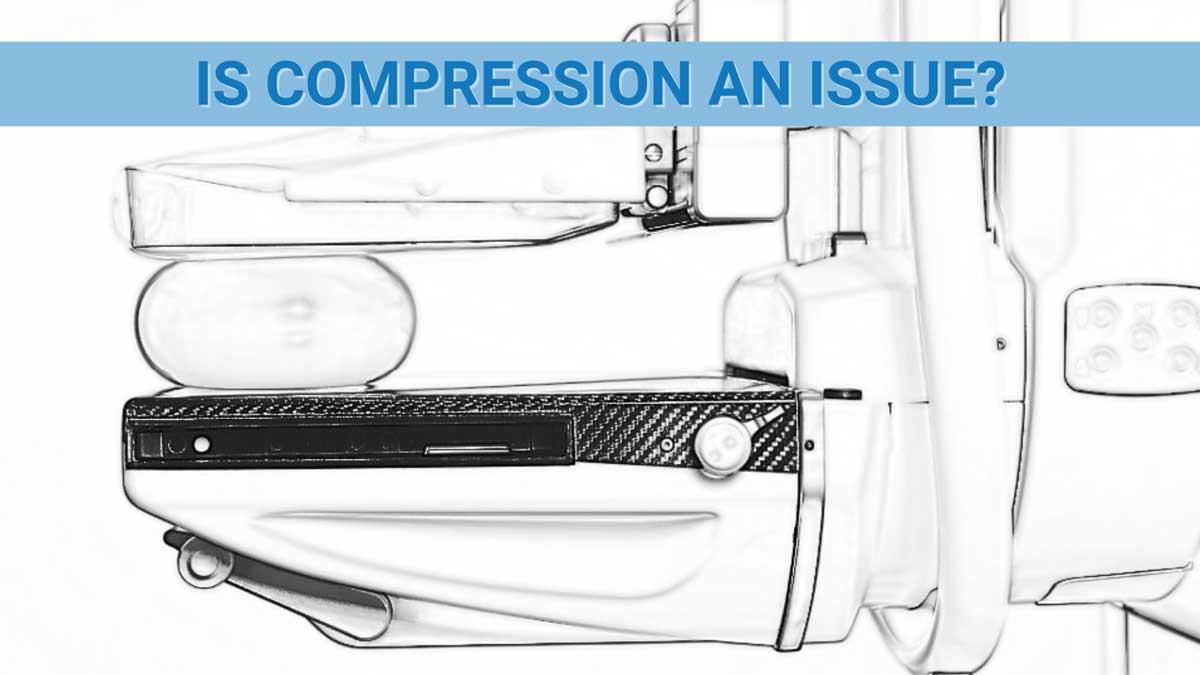
- Blog /
- September 7, 2021
Is Compression An Issue?
A mammogram is an x-ray image of the breasts that is used as one of the methods for breast cancer screening. Regular mammograms can be helpful in detecting cancer if caught early enough.
During a mammogram screening, the breasts are compressed between two sturdy surfaces in order to spread out the breast tissue. The x-ray machine is then used to capture black and white pictures of the breasts displayed on the screen. These breast images are then analyzed by a doctor for any signs of cancer.
During mammogram compression, a lot of women experience pain and discomfort, which is also one of the reasons why they delay their annual screening. Compression is applied to minimize the breast thickness, allowing acceptable image quality. However, guidelines on appropriate pressure during compression remain vague.
The Truth About Breast Compression
A study about the influence of breast compression on the performance of mammogram screening showed two key findings. The first is that applying too much pressure during mammography compression might minimize sensitivity. The other is that applying too little compression pressure might reduce specificity.
In addition to the uncertainty regarding the amount of ideal compression pressure, there is also growing concern about the aftermath of compression mammography.
There are a few cases of mammography compression that resulted in lingering side effects for the patient involved. For instance, in October of 2008, a patient with no clinical symptoms had a mammogram. The process resulted in swelling, extreme persistent pain, and the formation of a hematoma.
After three months had passed, the patient developed a 9 x11 cm mass in the same region. This study focused on the potential consequences that mammography compression can have on the person undergoing it.
Mammography is regularly used to detect lesions between 1 – 1.5 cm, and compression helps increase the visibility of suspicious masses. However, very little thought is given to the later effects of compression, not to mention the patient’s experience.
Mammography compression that involves forces of 45 lbs. or 200 N can be linked with moderate to extreme pain. Research studies that used a visual analog scale reported that the pain could fall in the range of 74% to 93%.
Women who are more prone to higher sensitivity, like those who have dense breasts, can experience even more discomfort. Pain felt during mammogram compression can also be a biological red flag for tissue damage. Besides, it can have the following problematic effects on the breasts:
- Mammogram compression can result in cutaneous bruising, even causing breast implants to rupture.
- There is also uncertainty pertaining to the effect of compression on occult malignancies (slow or dormant tumors), especially those with HER2 positivity. Observations suggest that interval tumors can become more aggressive when exposed to compression.
Final Thoughts About Compression
Breast cancer remains the only kind of malignancy that needs to be flattened out for optimal diagnosis and detection. However, keeping the clinical downsides of mammographic compression in mind, the goal should be to shift away from such compressive methods and instead switch to 3D imaging techniques like the Koning Breast CT. This will prevent patients from experiencing discomfort and possible future complications.
https://www.ncbi.nlm.nih.gov/pmc/articles/PMC5015182/
https://www.breastcancer.org/research-news/less-pain-when-women-control-mammo-compression
